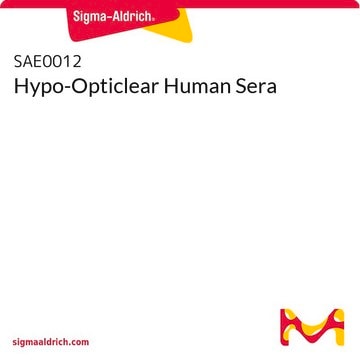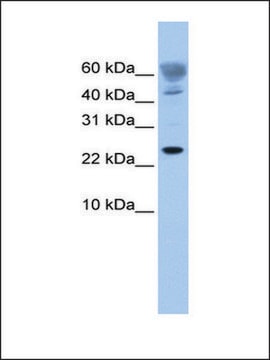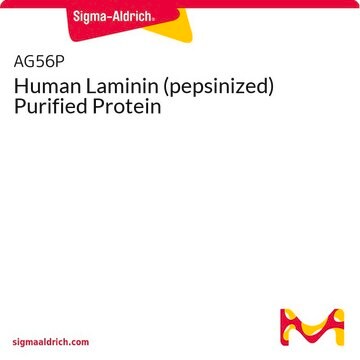ABC506
Anti-FUNDC1 Antibody
serum, from rabbit
Synonyme(s) :
FUN14 domain-containing protein 1
About This Item
Produits recommandés
Source biologique
rabbit
Forme d'anticorps
serum
Type de produit anticorps
primary antibodies
Clone
polyclonal
Espèces réactives
human, rat, mouse
Technique(s)
immunocytochemistry: suitable
immunoprecipitation (IP): suitable
western blot: suitable
Numéro d'accès NCBI
Numéro d'accès UniProt
Conditions d'expédition
dry ice
Modification post-traductionnelle de la cible
unmodified
Informations sur le gène
human ... FUNDC1(139341)
Description générale
Immunogène
Application
Apoptosis & Cancer
Apoptosis - Additional
Western Blotting Analysis: A representatitive lot of this antibody was used to detect puried FUNDC1 protein from bacteria or HeLa cell lysates (Liu, L., et al. (2012) Nature Cell Biology. 14(2):177-185).
Immunocytochemistry Analysis: A representatitive lot of this antibody was used to detect FUNDC1 in HeLa cells (Liu, L., et al. (2012) Nature Cell Biology. 14(2):177-185.
Immunoprecipitation Analysis: A representatitive lot of this antibody was used to co-immunoprecipitate FUNDC1 with endogenous LC3 in HeLa cells that were exposed to normoxic or hypoxic conditions for 24 hrs (Liu, L., et al. (2012) Nature Cell Biology. 14(2):177-185).
Qualité
Western Blotting Analysis: A 1:1000 dilution of this antibody detected FUNDC1 in 10 µg of HepG2 cell lysate.
Description de la cible
Uncharacterized bands may be visitible in some lysates.
Forme physique
Stockage et stabilité
Handling Recommendations: Upon receipt and prior to removing the cap, centrifuge the vial and gently mix the solution. Aliquot into microcentrifuge tubes and store at -20°C. Avoid repeated freeze/thaw cycles, which may damage IgG and affect product performance.
Autres remarques
Clause de non-responsabilité
Not finding the right product?
Try our Outil de sélection de produits.
En option
Code de la classe de stockage
12 - Non Combustible Liquids
Classe de danger pour l'eau (WGK)
WGK 1
Point d'éclair (°F)
Not applicable
Point d'éclair (°C)
Not applicable
Certificats d'analyse (COA)
Recherchez un Certificats d'analyse (COA) en saisissant le numéro de lot du produit. Les numéros de lot figurent sur l'étiquette du produit après les mots "Lot" ou "Batch".
Déjà en possession de ce produit ?
Retrouvez la documentation relative aux produits que vous avez récemment achetés dans la Bibliothèque de documents.
Notre équipe de scientifiques dispose d'une expérience dans tous les secteurs de la recherche, notamment en sciences de la vie, science des matériaux, synthèse chimique, chromatographie, analyse et dans de nombreux autres domaines..
Contacter notre Service technique








